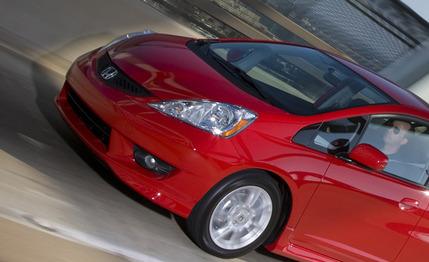
 Road Test
Road Test
The Honda Fit made its U.S. debut in 2006 and promptly won our endorsement as the best of a new breed of subcompacts—little cars that deliver more than just basic transportation and attractive mpg numbers. The Fit was inexpensive to buy and own, with lots of utility, interior volume to rival the larger Civic, interior appointments ditto, and fun to drive to boot—more than enough to win a spot on our 10Best Cars list.
Yet here we are, just two-and-a-half years into the car’s North American product cycle, scrutinizing a Fit that Honda calls “all-new” with more justification than most applications of that much-abused description.
If you were expecting a mere midterm face lift, you’re probably amazed. So were we—until we stopped to consider that the current Fit has been around in other parts of the world, where it’s known as the Jazz, since 2001.
Even so, amazing still applies. We called the Fit best of breed in ’06, yet the new one is better in almost every respect—more power, more room, more features, better looks, higher structural rigidity—without diluting the car’s thriftiness or eager character.
Where to begin? Dimensions are critical among the smallest of cars, so let’s start with package size. The wheelbase stretches almost two inches, from 96.5 to 98.4 inches, length goes from 157.4 to 161.6 inches, and width expands by a half-inch, to 66.7. Only height—60 inches—is unchanged.
The bones of the new Fit have been substantially stiffened in the redesign, in part owing to increased use of high-tensile steel in the unit body. Honda claims an increase in front-end rigidity of 164 percent, which suggests that either the engineering department has adopted a new accounting system or the previous unit body employed linguine in its structure. Since we thought the previous Fit was made of pretty stern stuff—an opinion fortified by the car’s nimble footwork—we have trouble digesting this claim. But there’s certainly no question that the new Fit retains the terrier spirit and moves of the original.
More size usually means more weight, and that’s true here. The Fit Sport that humiliated its six opponents in a comparison test a couple years back [“$15,000 Cheap Skates,” May 2006] weighed 2481 pounds, and our long-term test car, another Sport model, weighed 2448. This ’09 test car weighs 2506 pounds. Also, thanks to the ’09 Fit’s longer snoot—sculpted to give the car a little more curbside flash—forward weight bias goes from 61.5 percent to 62.3, making it pretty much the nose-heaviest car in this class.
Nose heavy and front drive is usually a prescription for reluctant transient response and porcine understeer, but that’s not the case here. There have been minor changes in the geometry of the suspension—still struts up front and a twist-beam axle at the rear, with anti-roll bars at both ends for the Sport—but as noted earlier, the Fit retains its athletic character. The electric power steering is light, quick (2.5 turns lock-to-lock), and precise. Grip—delivered by a set of Bridgestone Turanza 185/55 all-season tires on new 16-inch aluminum wheels—is adequate at 0.80 g. Body motions are subdued. The Fit communicates its eager responses in a way that’s reminiscent of a sports car.